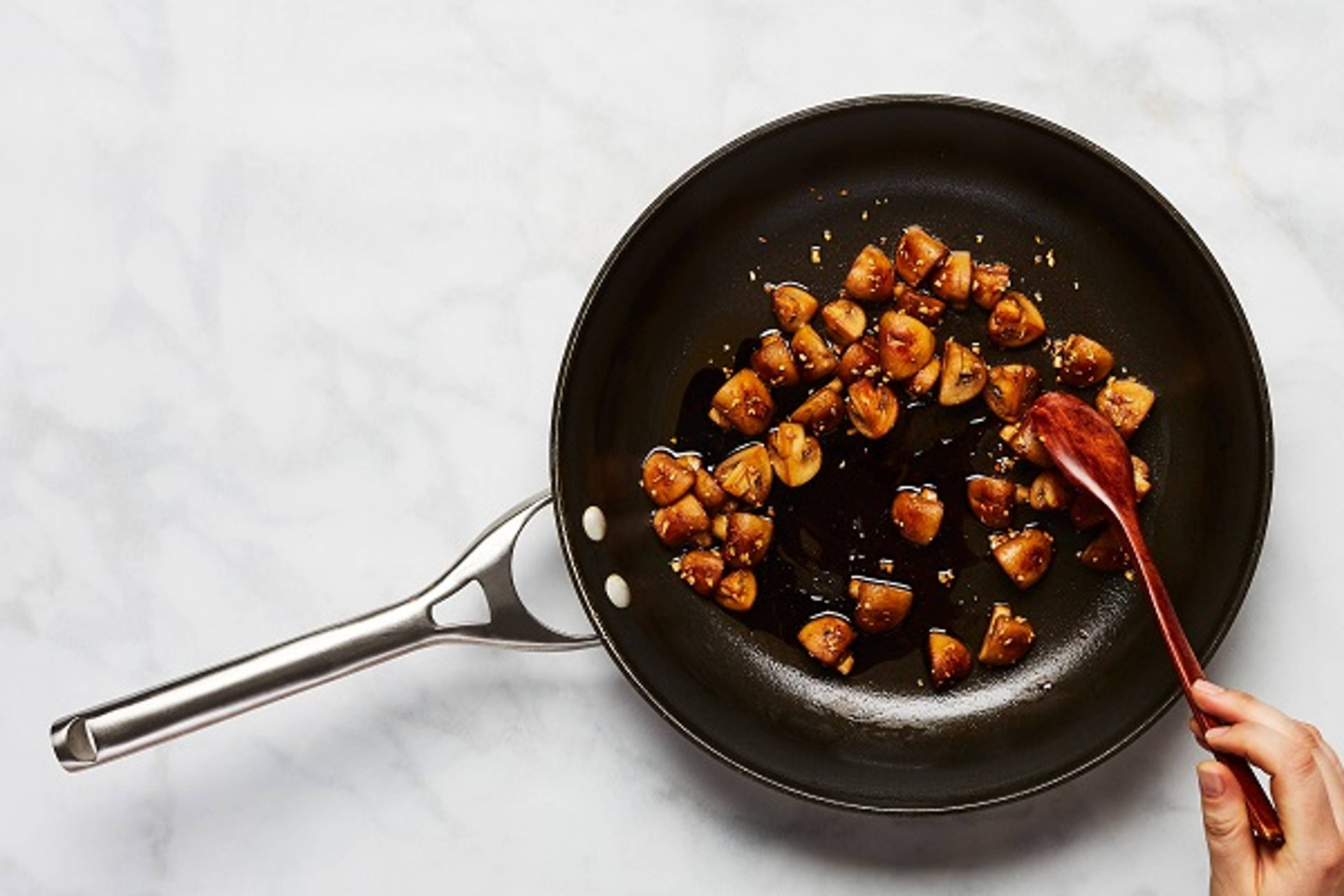What Is Sautéing, and How Do You Do It?
Sautéing 101
Sauté refers to cooking high and dry—using a small amount of fat to cook food quickly in a piping-hot pan. The word sauté means “jump” in French, and indeed, making the food flip in the pan is a key part of the technique, so that it’s not sitting for too long in one spot. However, unlike stir-frying in a wok, you’re not constantly moving the food around with a tool, either.
Although “sauté” is often used as a catchall for any form of cooking in a hot pan on the stovetop, mastering the nuance between sautéing and pan-frying can mean the difference between crisp-tender vegetables and soggy limp ones, or a golden breaded chicken breast versus one that is pale, tough, and dry. Let’s get into the specifics.

How to Sauté

What to Sauté and Why

Know the Difference: Sauté vs. Fry vs. Pan-Fry
Let’s Talk About Pans - What to Use When Sautéing
The Right Pan for Sautéing
When it comes to the right tools for the job, recipes will often call for a skillet or frying pan—or more formally, a sauté pan—though all three may be used interchangeably. All are shallow and wide, with either straight sides (skillet) or sloped sides (sauté pan).
A good sauté pan should have a large surface area so the food doesn’t get crowded and steam instead of browning, and it should be made from a material that conducts heat evenly. Ideally, you’ll use stainless steel (which readily transfers to the oven at high heat without damage), anodized aluminum, or a nonstick pan (this is especially helpful for beginners).
A good sauté pan should have a large surface area so the food doesn’t get crowded and steam instead of browning, and it should be made from a material that conducts heat evenly. Ideally, you’ll use stainless steel (which readily transfers to the oven at high heat without damage), anodized aluminum, or a nonstick pan (this is especially helpful for beginners).
Do You Sauté With the Lid On or Off?
Off! Many recipes won’t specify this, so it helps to understand what a lid does. Using a pot or pan lid is helpful when you’re trying to keep moisture in, because it captures any evaporating liquid and puts it right back into the dish. When you’re steaming or braising foods, you keep the lid on. But when you’re sautéeing, you’re after the opposite effect—you want the liquid to evaporate so that whatever you’re cooking can get a nice sear on the outside.